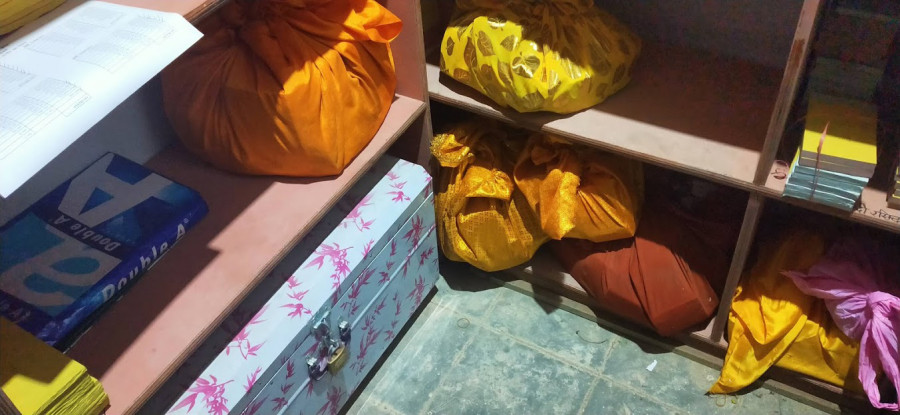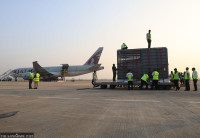Lumbini Province
Millions of foreign currencies rotting away in Lumbini
Much of the cash is from countries whose money the Central Bank does not exchange.
Madhav Dhungana
Around 1.5 million tourists, both domestic and international, visit Lumbini every year. Most of them, especially Buddhist visitors, offer currencies to the various statues and monuments, especially the Mayadevi Temple and Ashok Pillar. Millions of foreign currencies get collected in the birthplace of Buddha every year. The Lumbini Development Trust makes use of Nepali currencies, but the foreign currencies have been in store for years. For lack of proper upkeep— the currencies are stored in wet stores—the money has even started to decay.
The government has done nothing to manage the collected amount. Trust officials say many currencies are from countries whose money Nepal’s central bank does not exchange. Even though the Trust has set up contribution boxes in various places, many pilgrims offer the money to the statues themselves. Currently, a total of Rs190 million is in store.
The Trust had corresponded with Nepal Rastra Bank six years ago to discuss how to utilise the stored money. “Lack of management of foreign currencies has been a trouble for us,” said Saroj Bhattarai, a member secretary of the Trust. “Foreign coins get washed, but paper currencies lie neglected.”
Bhattarai said that the central bank has paid no heed to address this issue despite repeated correspondence.
Bhattarai further said that the process of exchanging the collected foreign currencies is complicated; hence the Trust is storing it for the time being.
“The paper currencies are rotting away. There have been talks about auctioning the currencies for sale,” he said. “Some of the notes measure up to one lakh rupees.”
Surendra Muni Shakya, chief of funds at the Trust, said that the currencies have been collected since 2042 BS. “To keep the currencies from rotting further, they have been enveloped in polythene and clothes,” Shakya said. “I have informed the central bank about this.”
Shakya told the Post that the central bank has said it would take the money for exchange in Singapore, and in case the currencies couldn’t be exchanged there, they wouldn’t be returned. “This has pushed us further into a crisis,” Shakya said.
The Trust keeps a record of the total amount collected out of offerings presented by the pilgrims. Of the total 190million rupees, 91.6 million is from Myanmar, 67.4 from Vietnam, and 25million from Indonesia. There are currencies from Sri Lanka, Mongolia, Bangladesh, Laos, Oman, Uganda, Bhutan, Congo and Afghanistan, among others. These are paper currencies. There’s no record of the total amount of coins because the central bank has declined to accept those, according to Shakya.
Officials at the Trust said that it corresponded with the Siddharthanagar branch of Nepal Rastra Bank five years ago with all the documents, but Rajendra Bhattarai, director of the branch, said that the bank hasn’t received the statement that it wanted.
“For this kind of transaction, we have to coordinate with the Bank of Singapore’s foreign currency exchange department,” said Bhattarai. “If the currencies do not qualify for exchange, then they may be seized. So the Trust should come up with a decision on what to do if that happens.”
One official at the Trust said that the government can go through diplomatic channels to exchange currencies. “The government is more concerned about appointing a party faithful in the Trust rather than managing the currency,” the official said, requesting anonymity.
Likewise, Om Prasad Aryal, former chief of funds at the Trust, said that the lack of management of currencies received as offerings is entirely the government’s shortcomings. “I tried to get the government’s attention to the issue, but all efforts went in vain,” he said.




 10.12°C Kathmandu
10.12°C Kathmandu













%20(1).jpg&w=300&height=200)

